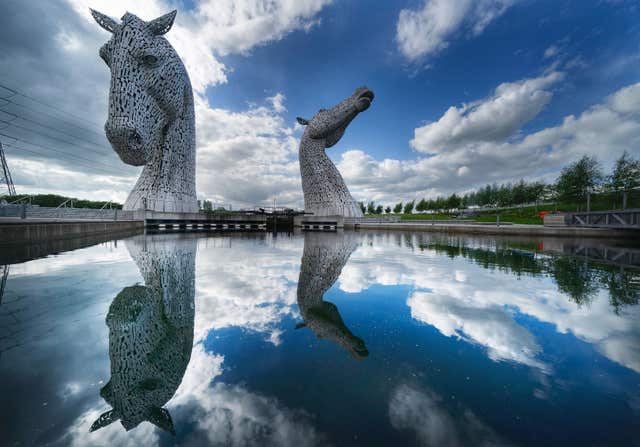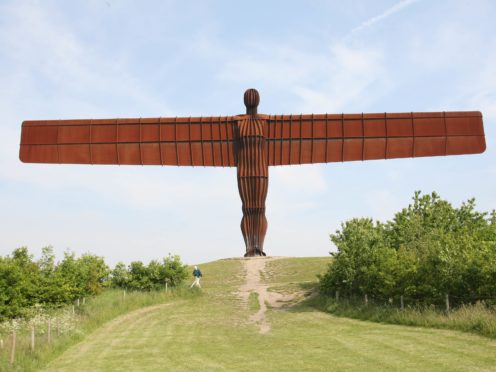The Angel of the North “disappeared” in front of astonished onlookers during a stunt to show how many artworks might not exist without National Lottery funding.
Sir Antony Gormley’s sculpture was erected in Gateshead in 1998 with the help of £584,000 – more than 70% of the total cost – from National Lottery funding.
Illusionist Julius Dein, who created the stunt to celebrate the National Lottery’s 25th anniversary, told the PA news agency: “The audience were completely freaked out. There were screams, gasps, swearing.
“It’s a massive, very heavy structure. The fact it’s disappeared is quite magical.”
Dein, who has six million Instagram followers and has performed for stars like Drake, gathered a group of strangers in front of the sculpture which they could view through a frame.
He then pulled down a blind and when he raised it, the sculpture had disappeared.
“They were gob-smacked. One of the ladies thought that I had got a crane to lift the Angel of the North up – which is not possible,” he said.
“It took some serious mental magic preparation and concentration to pull off this.”
Dein said a video released today shows the trick exactly as it appeared to the live audience on October 10.
“When you think magic you think someone who’s going to come up to you at a party. You don’t think making a massive statue disappear,” he said.
“It was a massive challenge. As a magician I like a challenge. The appeal of magic is the effect it has on people. They become like little children again.”
Dein, from Finchley, north London, told PA: “I made the point that without the National Lottery, the Angel of the North would not be here.
“You think money, money, money, but the primary purpose of the National Lottery is about giving to good causes.”
“It was a different type of trick with a different message.”
Dein started performing magic tricks aged seven, gave his first professional performance at a bar mitzvah at the age of 12, and performed while studying for a international relations degree at Kings College, London.
“Then I started posting my videos and it went crazy with millions of people seeing what I do every week,” he told PA.
“I was very excited to do this. I would love to do more big stunts like this in future.”

The National Lottery has also supported The Kelpies, Kew Gardens, Tate Modern, the National Gallery, the Natural History Museum, the National Portrait Gallery, the Southbank Centre and the British Museum.
Darren Henley, chief executive of Arts Council England which is part of the National Lottery, said: “Over the past 25 years, National Lottery funds have helped us transform the arts and cultural offer in England: investing in new buildings like Nottingham Contemporary and The Lowry in Salford, supporting artists and smaller organisations through National Lottery Project Grants, and developing programmes like Creative People and Places, targeting areas where people have traditionally been less engaged in the arts.
“We’re very grateful to National Lottery players for helping support arts and culture across the country and look forward to seeing the impact of National Lottery funding over the next 25 years.”
More than £5 billion of National Lottery funding has been invested in theatre, music, dance, literature and visual arts projects since 1994. Around £6 million is awarded by The National Lottery to UK arts projects every week.
